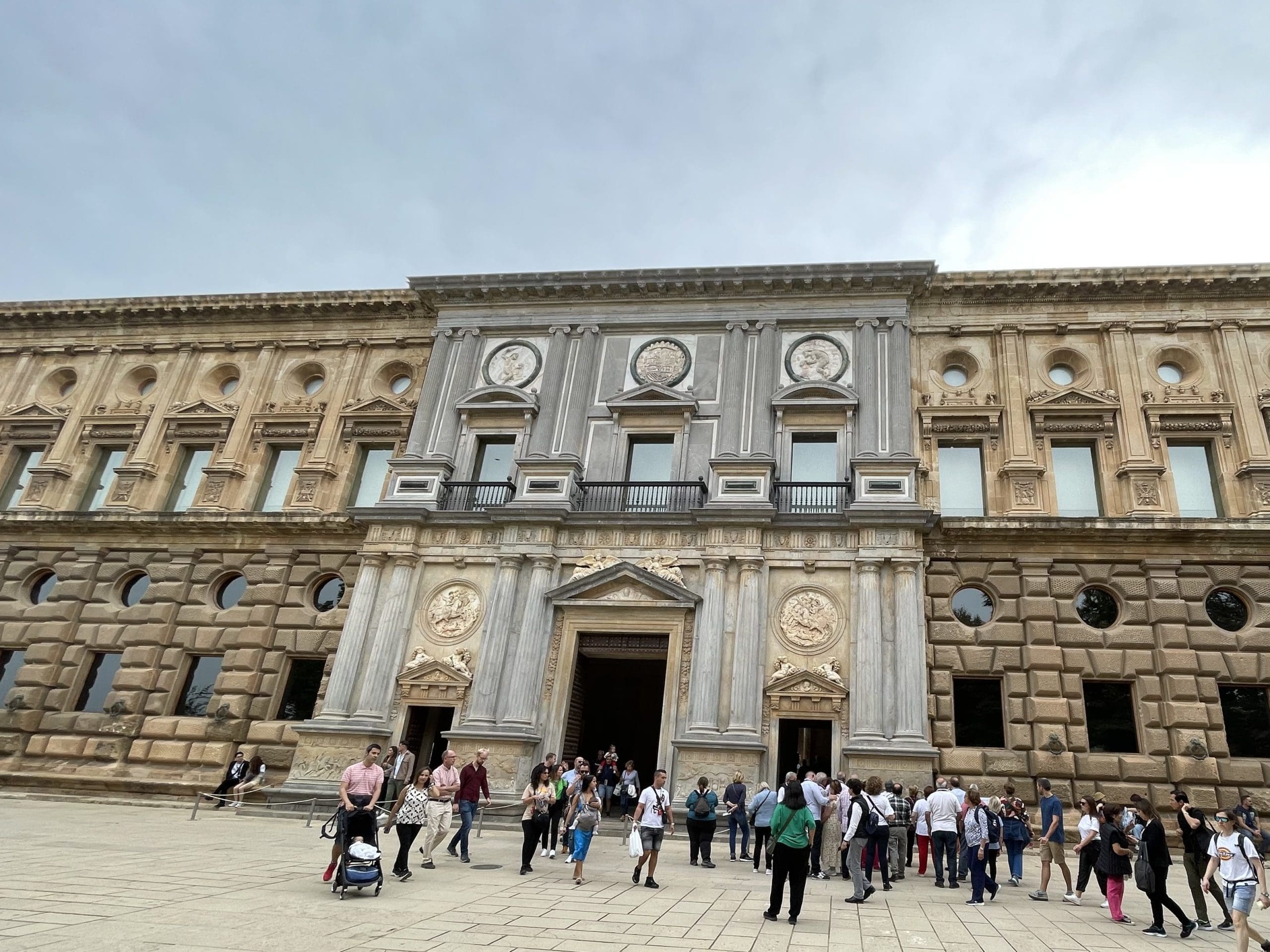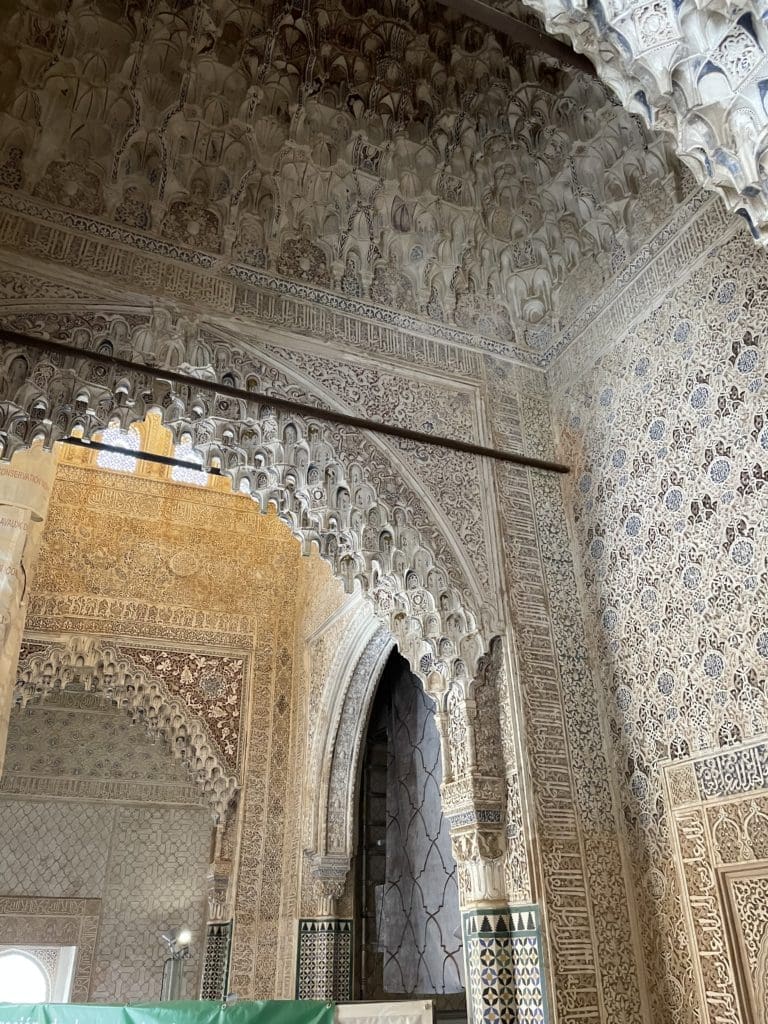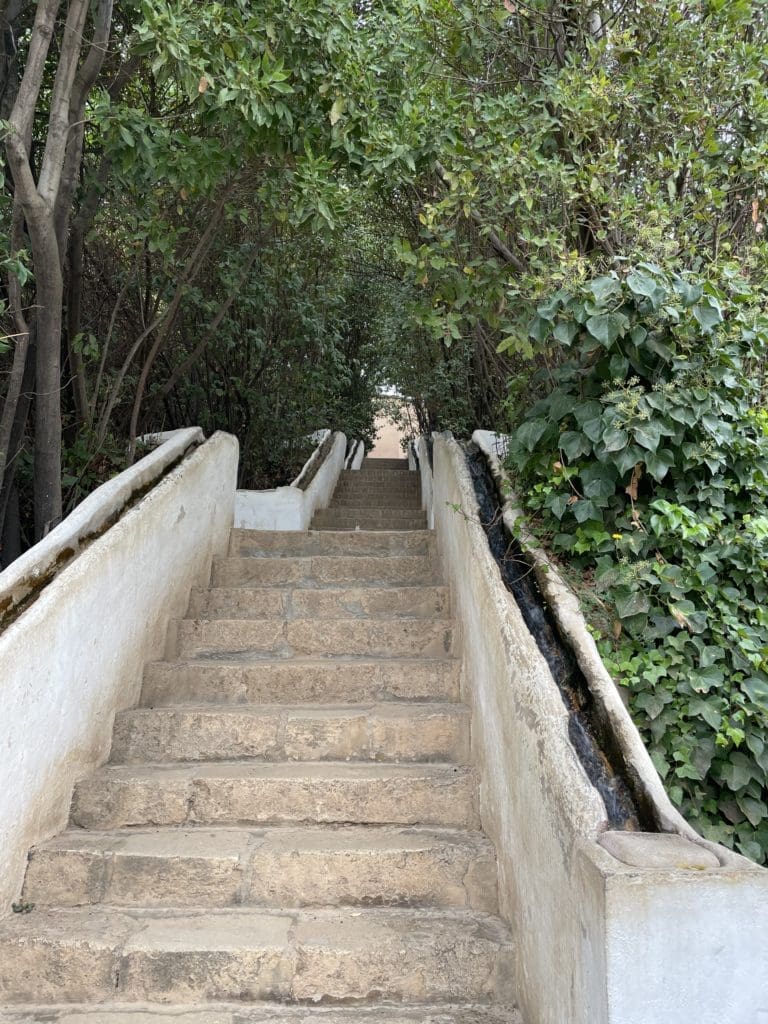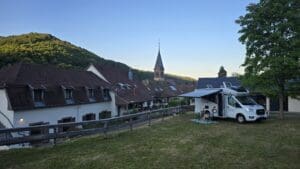This is the second of four posts about our trip to Analusia. You can read the first post here, the third here as well as the fourth here.
If you ignore the cozy little alleys, you pretty much always have this impressive building in your sights. This is partly due to its location, but after spending a whole day there without catching up on everything, you realize that it also has to do with the size. One cannot help but wonder how it was even possible to build something like this with the technology available more than seven centuries ago.
However, the trip was about to come to a snowy end. Before we left, we kept track of the availability of tickets, but as there were plenty of them, we chose not to pre-book. This was a big mistake as this particular week there was very limited availability due to some reason unknown to us. Once we had come to terms with the idea that we would miss the main attraction, a couple of tickets suddenly appeared and we snapped them up quickly.




The first known historical document that mentions the Alcazaba, the oldest part of the area, describes how in 889 Sawwar ben Hamdun sought refuge in the old dilapidated castle. When Muhammad I Ibn al-Ahmar, the first emir of the Nasrid dynasty, occupied it in 1238, it was the starting point for the construction of what we today call the Alhambra (The Red One, freely translated).
Although the work continued for several hundred years, it was during the reigns of Yusuf I (1333–1354) and Mohammed V (1354–1359) that some of the most impressive buildings were erected. This applies to the Patio of the Lions (Patio de los Leones), The Gate of Justice (Puerta de la Justicia), the Comares Palace (Cuarto de Comares) and the Hall of the Boat (Sala de la Barca), but they also refurbished several of the older ones the parts.
In 1492, the castle was taken by the Spanish government of King Ferdinand and Queen Isabella, but instead of being forgotten, they rebuilt it as a royal court. Incidentally, it was when Boabdil of Granada surrendered to the Christians that, according to his mother, he 'wept like a woman' and uttered the winged words that 'this was the last sigh of the Moors'.
This was the beginning of the end for the Alhambra's heyday. Charles V did build a palace here but beyond this there were minimal changes. When Napoleon came to Granada, he apparently said that the castle was only good for those who could not fit in the tents. It certainly didn't get any better that he decided to blow up parts of the complex so it couldn't be used by enemies at a later stage.
At the end of the 19th century, however, renovations began and today it is considered one of the most well-preserved buildings in Islamic architecture.

Everywhere one goes there are parks, fountains, statues and other decorations. It is a large area and if you want to manage everything, you need a well-thought-out plan. We were there for a whole day, from early morning to late afternoon, and even then we felt like we were stressing through certain parts. Also keep in mind that you need to make an appointment well in advance to be able to enter the palace.
If you, like us, have a bit of bad luck with availability, it might still be worth keeping an eye on it official site every day as they release tickets a little from time to time. Another tip could be that the guided tours sometimes have better accessibility than if you just book tickets.






The Alcazaba is, as we mentioned earlier, the oldest part. It was Muhammad I who equipped the castle and turned it into an impressive defensive work. From its various towers you have a fantastic view of the whole of Granada and the surrounding areas. Most prominent is The Watch Tower (Torre de la Vela) but there are also a long line of other impressive towers and gardens.
At the time of its construction, this must have been a perfect place to defend itself, but the conditions changed completely when mobile artillery made its entrance into world history. During the ten years that Ferdinand and Isabella were at war with the Nasrid dynasty, they had problems with the light cavalry of the Moors who attacked quickly and then retreated to a more easily defended position such as Alcazaba. It was only when they began to use this modern invention to capture the fortifications that they gained the upper hand.
Perhaps one should add that the fall of the Nasrid dynasty was really only the last nail in the coffin for the Moors. During the roughly 700 years that they ravaged Spain, they fought as much among themselves as against the Spaniards, which slowly but surely broke their dominance.



Charles V's palace was built to be used as a summer residence, but before construction was completed the king found that it would not meet his requirements. The work was finished and not resumed until well into the 20th century. In addition to the exciting architecture, the palace houses two museums, one for art and one for archaeology. The latter contains many of the items that were in the Nasrid palace during its heyday. The museum also contains a large number of objects with cultural significance within Islam, which is why it is popularly called the Arab museum.





Just outside next to the "back door" of the Alhambra is Parador de San Francisco. Parador is a hotel chain consisting of i.a. old castles and monasteries run under the auspices of the Spanish state. In the past, they were known for being a simple and affordable alternative to regular hotels, but nowadays many of them belong to the upper class both when it comes to price and standard. On this occasion we settled for a three course lunch but we hope to have the opportunity to stay at one of them sometime in the future.





Then we have the palace itself, the Nasrid Palace (Palacios Nazaríes). There are so many spectacular rooms that you hardly know where to start. To be honest, we probably felt that even before the palace we had experienced enough stucco and mosaics for a lifetime. Even the first room, Mexuar, where visitors had to wait before an audience, is so full of decorations that it almost makes you dizzy.
If you ignore the many rooms with stucco that are described a little further down in the post, we have tried to select some favorites from almost three hundred pictures. The interiors don't do it justice in pictures, but we still hope you get a feel for how magnificent it is.






I have already mentioned the stucco covering every available surface. I tried to find a Swedish word for it but the only ones I could find were the English, carved Islamic stucco, or the Spanish, Yesería. They were made by either carving out the details or casting them into a mold. When everything is in place, it is painted in a monochrome color. When you see an arch, ceiling or wall filled with this pattern, you can't help but wonder how many man-hours are behind this work.
That this art form is common in the Muslim world is due to the fact that in Islam you are not allowed to reproduce images. This means that one instead has a tradition of creating almost endless geometric patterns that are sometimes also woven together with quotations from various scriptures. When you stare into this pattern, you often become a little spellbound and it almost feels like the pattern comes to life. There are also a few parts that represent people, but these were created after 1492 when the Christians took over the palace.










On the way to Generalife there is a park that is not only beautiful but also exemplary geometric which appealed to our blue mind. We got the feeling that the purpose of the park was not to impress, but rather to offer harmony so that you can unwind and let go of the worries of the day. In addition to the park, the location also offers an excellent view of both the Alhambra and Granada.
Another thing that is a little more obvious here than in other places is the ingenious irrigation system. It is fully integrated with the architecture and consists of both aqueducts and small channels above and below ground. It is true that the system is the same throughout the Alhambra, but here you can study in more detail how the water is directed crosswise so that the irrigation is managed without human intervention.




The Generalife was the private residence of the Emir and is of a completely different character from the palace. The whole place breathes calm, harmony and instead of trying to impress the visitors, it feels like every little detail aims to make the place more peaceful. Admittedly, there is plenty of decoration here too but they are one with the surroundings and enhance the view and environment rather than draw the eye.
This was without a doubt our favorite in the whole area. Not the same opulence, but at the same time a place that you would like to stay for a long time just because it is so peaceful and nice. A suggestion might be to go clockwise through the Alhambra and then finish with Generalife, as you might need to rest a bit after all the impressions you got during the day.





How then should this be summed up? The Alhambra offers so much that even in a whole day you won't have time to see everything. At the same time, you become a bit blasé when you've been there for a while, as the senses simply can't take it anymore. What was incredibly impressive an hour ago is now just another stucco. You also can't help but be a little depressed when you think about how much resources went into building this at the same time that large parts of the population were poor farmers.
Now I may sound very negative but don't get me wrong because I really think this is one of the most impressive pieces of architecture I have ever seen. I really recommend anyone visiting southern Spain to make a detour here as we are 100% sure you will be as impressed as we were.





